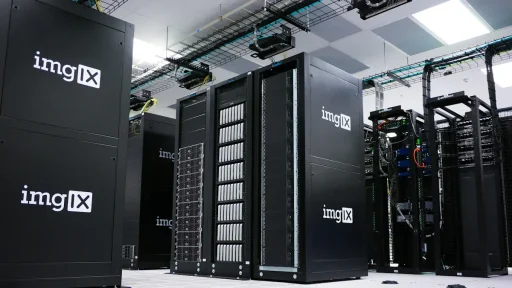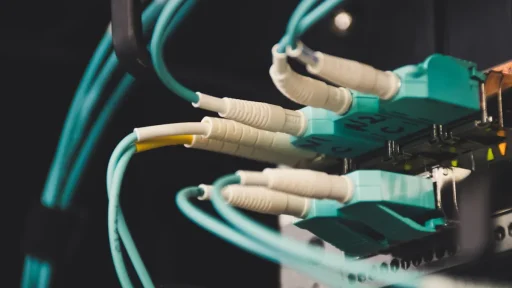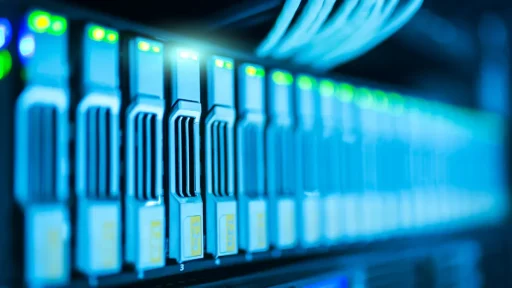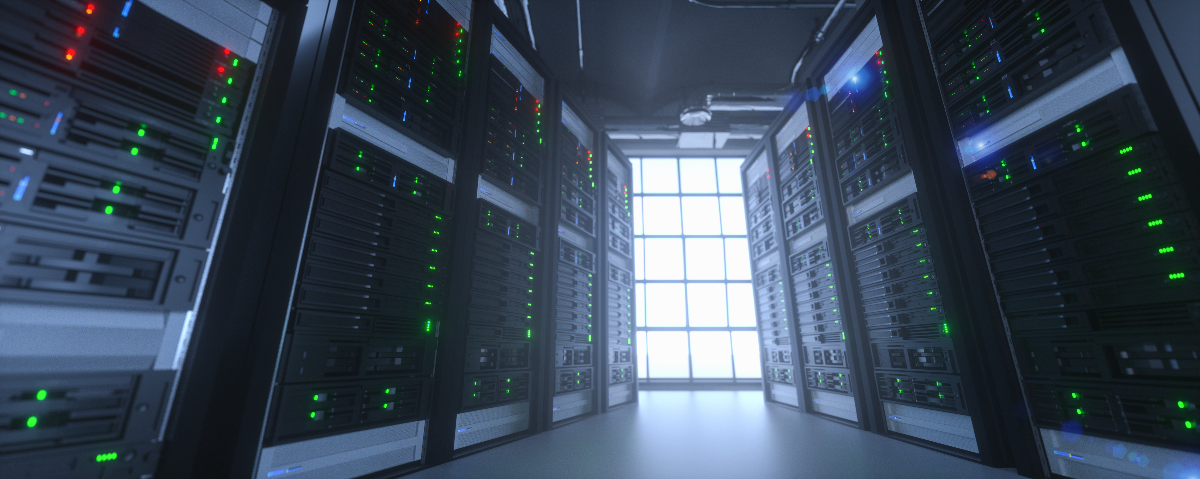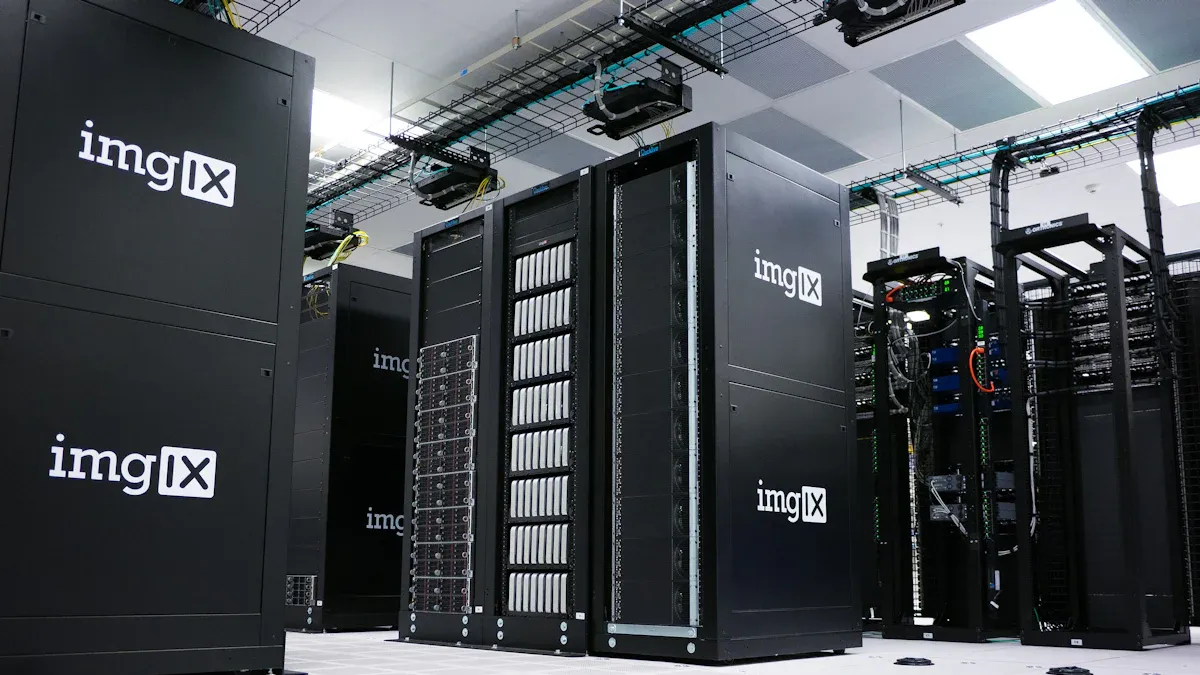

The rapid adoption of SSDs in 2025 is transforming the way you think about data storage. As data center storage trends evolve, SSDs have emerged as a critical solution. Their ability to handle modern workloads, such as AI and machine learning, has made them indispensable. Over 80% of storage workloads are now read-dominant, and SSDs excel in these scenarios, ensuring faster data access. The global SSD market, valued at $14.83 billion in 2025, is projected to grow at a 12.51% CAGR, reaching $42.87 billion by 2034. This growth highlights how SSDs align with your need for speed, efficiency, and sustainability in data centers.
Key Takeaways
SSDs are important for data centers because they are fast and efficient, especially for AI and machine learning tasks.
More than 80% of storage jobs involve reading data, so SSDs are the best for quick access.
SSDs use less power than old HDDs, saving energy and cutting costs.
Using SSDs helps the environment by lowering energy use and cooling needs in data centers.
SSDs work better and last longer, which is important for handling live data in edge computing.
New NAND technology has made SSDs cheaper, so more data centers can afford them.
Hybrid cloud systems use SSDs to get data faster and grow easily.
Buying SSDs now can prepare your data center for future storage needs.
The Role of AI in Shaping Data Center Storage Trends
AI Workloads Demand High-Performance Storage Solutions
AI workloads have transformed the way you think about data center storage trends. These workloads require storage solutions that can handle vast amounts of data while maintaining exceptional speed and reliability. Metrics like throughput, latency, and scalability play a critical role in meeting these demands. For example:
Metric | Importance |
|---|---|
Throughput | Much higher throughput is essential for handling large volumes of data. |
Latency | Greater than 100 times lower latency is crucial for real-time processing. |
Scalability | Fewer servers and racks per petabyte needed enhances scalability. |
Reliability | Better reliability with longer useful lifetimes ensures data integrity. |
Energy Efficiency | Better energy efficiency for a given level of performance reduces costs. |
When AI models process data, slow storage can create bottlenecks. This delays project timelines and reduces system effectiveness. You need high-performance storage to ensure AI models train and infer data efficiently. SSDs meet these requirements by delivering the speed and reliability necessary for modern AI applications.
SSDs Enable Faster Data Processing for Machine Learning and AI
SSDs have revolutionized data storage trends by enabling faster data processing for machine learning and AI tasks. Traditional storage solutions often struggle to keep up with the bandwidth and efficiency required for these workloads. In contrast, SSDs excel in these areas:
Metric | SSD Performance | Traditional Storage |
|---|---|---|
Bandwidth | 270 GB/s | N/A |
Data Processing Efficiency | High | Low |
With SSDs, you can achieve significantly faster data retrieval and processing speeds. This is especially important for AI applications that rely on real-time data analysis. By reducing latency and increasing bandwidth, SSDs ensure that your AI models operate at peak performance. This makes them an essential component of modern data center storage trends.
Scalability and Reliability for AI-Driven Applications
AI-driven applications demand storage solutions that are both scalable and reliable. SSDs are designed to meet these needs with features like advanced wear-leveling algorithms and robust controllers. These features ensure consistent performance under heavy workloads and extend the lifespan of the storage. For example:
SSDs maintain consistent performance even during constant read/write cycles.
They are equipped with advanced error correction mechanisms to enhance durability.
High endurance ensures that SSDs can handle the demands of mission-critical applications.
Many AI applications require immediate data access. Traditional storage often struggles to meet these low-latency requirements. SSDs, particularly those using NVMe technology, have transformed data retrieval by significantly reducing latency bottlenecks. This improvement enhances operational efficiency, which is crucial for AI-driven businesses. Additionally, SSDs are easily scalable, allowing you to add more drives or deploy higher-capacity configurations as your storage needs grow.
The accelerating pace of AI research and high-performance computing has made SSDs indispensable. Enterprises involved in deep learning and predictive analytics increasingly invest in AI-optimized SSD solutions to stay competitive. By adopting SSDs, you can future-proof your data center and ensure it meets the demands of AI-driven workloads.
Sustainability and Energy Efficiency in Data Storage Trends
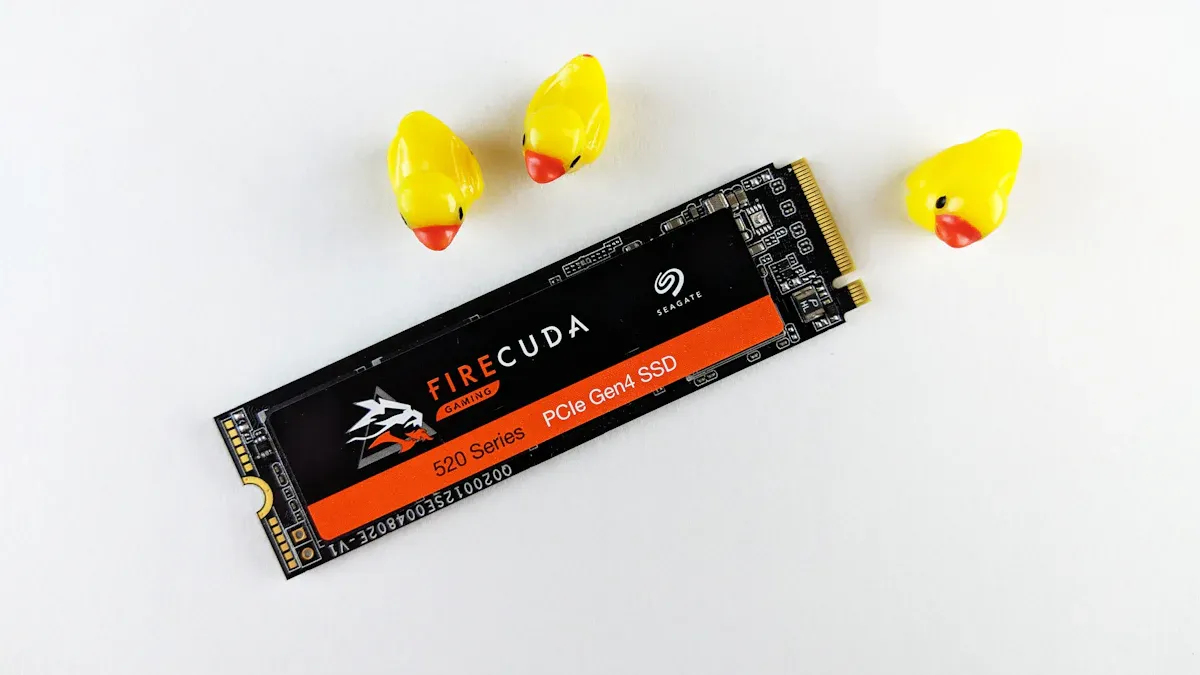

SSDs Consume Less Power Compared to Traditional HDDs
Energy efficiency has become a critical focus in data center storage trends. You might already know that traditional HDDs consume significantly more energy than SSDs. This difference impacts not only operational costs but also the overall sustainability of your data center. SSDs, with their lower energy consumption, offer several advantages:
They reduce power usage, which directly lowers electricity bills.
Cooling requirements decrease because SSDs generate less heat.
Computers and servers equipped with SSDs run cooler, improving their longevity.
These benefits make SSDs an ideal choice for modern data storage trends. By adopting SSDs, you can achieve substantial energy savings while maintaining high performance. This shift aligns with the growing demand for energy-efficient solutions in data centers.
Alignment with Green Data Center Initiatives
As data center trends evolve, sustainability measures have taken center stage. The push for green data centers has highlighted the need for energy-efficient storage solutions. While energy efficiency in data centers has improved, the increasing demand for data transmission continues to strain resources. This is where SSDs play a pivotal role. Their energy-efficient design helps mitigate the environmental impact of growing data demands.
By incorporating SSDs into your infrastructure, you contribute to green data center initiatives. These initiatives aim to reduce carbon emissions and promote sustainable practices. SSDs not only consume less energy but also support the broader goals of data center sustainability. Their adoption represents a practical step toward achieving a greener future for data storage.
Reducing Carbon Footprint with SSD Adoption
Reducing your carbon footprint is no longer optional; it’s a necessity. Data centers account for a significant portion of global energy consumption. Traditional HDDs exacerbate this issue due to their higher power requirements. In contrast, SSDs offer a more sustainable alternative. Their lower energy consumption translates to reduced carbon emissions.
When you switch to SSDs, you also lower cooling demands, further decreasing your environmental impact. This dual benefit makes SSDs a cornerstone of sustainability measures in data centers. By adopting SSDs, you align your operations with global efforts to combat climate change. This not only enhances your reputation but also ensures compliance with emerging environmental regulations.
Tip: Transitioning to SSDs is one of the simplest ways to improve energy efficiency and reduce your data center’s carbon footprint.
Hybrid and Edge Computing as Key Data Center Trends
The Need for Low-Latency Storage in Edge Environments
Edge computing investments are reshaping how you approach data storage. As devices and applications generate massive amounts of data at the edge, the need for low-latency storage becomes critical. Latency directly impacts user experience and the speed of data processing. For example, AI workloads at the edge require immediate execution to deliver real-time insights. Slow storage solutions can hinder these processes, creating bottlenecks that affect operational efficiency.
SSDs address these challenges by offering significantly lower latency compared to traditional storage options. Their ability to process data quickly ensures seamless performance for edge applications. NAND flash-based NVMe drives, widely adopted in edge computing systems, deliver faster read/write speeds, reduced energy consumption, and higher endurance. These features make SSDs ideal for analytical models and IoT applications, where reliability and speed are non-negotiable.
SSDs Support Real-Time Data Processing at the Edge
Real-time data processing is essential for edge computing environments. Whether you’re managing IoT devices or deploying AI models, the ability to process data instantly can make or break your operations. SSDs excel in this area, providing unparalleled performance for edge workloads.
Consider the sequential write performance of SSD configurations:
Configuration | Sequential Write Performance |
|---|---|
4 SSDs | |
8 SSDs | 11.3 GB/s |
12 SSDs | 16.8 GB/s |
These numbers highlight how SSDs scale to meet the demands of edge computing. With SSDs, you can achieve higher throughput and lower latency, ensuring your systems operate efficiently. This capability is especially important for AI-driven applications that rely on real-time insights to make decisions. By investing in SSDs, you enhance your edge computing infrastructure and unlock new possibilities for data-driven innovation.
Hybrid Cloud Architectures Benefit from SSD Performance
Hybrid cloud architectures combine on-premises and cloud storage to create flexible and scalable solutions. SSDs play a pivotal role in optimizing these systems. Their high performance and cost-effectiveness make them ideal for handling diverse workloads.
Intelligent caching algorithms keep frequently accessed data on SSDs, improving retrieval speeds.
Hybrid storage systems seamlessly scale to accommodate growing data storage needs without disrupting operations.
SSDs enhance data read and write rates, accelerating support for critical applications.
Traditional disk-based storage arrays often struggle with performance issues, especially for enterprise workloads. SSDs address these challenges by delivering faster data access and improved reliability. When combined with HDDs in hybrid systems, SSDs create a balanced solution that offers both performance and cost savings. This combination allows you to migrate workloads to the cloud without sacrificing storage efficiency.
By integrating SSDs into your hybrid cloud architecture, you future-proof your data center and ensure it meets the demands of modern data storage trends. SSDs enable you to scale operations, reduce energy consumption, and optimize performance, making them indispensable for hybrid environments.
Cost and Performance Improvements in Data Center Storage
Advancements in NAND Technology Lower SSD Costs
Advancements in NAND technology have significantly reduced SSD costs, making them more accessible for data centers. One major breakthrough is the adoption of QLC (Quad-Level Cell) technology. QLC SSDs store four bits per cell, offering higher density and improved power efficiency compared to TLC (Triple-Level Cell) SSDs. Recent innovations, such as the introduction of 2Tb QLC NAND die and 32-die stacks, have further increased storage density. These advancements lower the cost per terabyte and reduce power consumption, making SSDs a cost-effective choice for modern data storage.
The shift toward QLC technology has also brought SSDs closer to cost parity with traditional HDDs. As flash memory prices continue to decline, QLC SSDs now provide larger storage capacities at a reduced cost per gigabyte. This makes them an attractive option for data centers looking to optimize both performance and operational efficiency. By adopting SSDs built on advanced NAND technology, you can achieve better energy efficiency while reducing overall storage expenses.
Increased Storage Density and Capacity in SSDs
Modern SSDs offer unparalleled storage density and capacity, surpassing traditional HDDs in every metric. For example, QLC SSDs can achieve up to 120TB of total storage capacity, compared to HDDs, which max out at 40TB. Additionally, SSDs provide faster sequential read speeds, exceeding 7 GB/s, while HDDs lag behind at just 300 MB/s. This performance boost ensures faster data access and processing, which is critical for data center operations.
The benefits of SSDs extend beyond speed. Their power efficiency is another key advantage. SSDs deliver 4.88 TB/W of energy efficiency, compared to 3.4 TB/W for HDDs. This means you can store more data while consuming less energy, aligning with sustainability goals. Furthermore, SSDs achieve a capacity density of 17.4 GB/mm², far outpacing the 2.14 GB/mm² offered by HDDs. These metrics highlight why SSDs are becoming the preferred choice for data storage in modern data centers.
Metric | QLC SSDs | HDDs |
|---|---|---|
Capacity per cell | 4 bits | 1-2 bits |
Total storage capacity | Up to 120TB (2024) | Up to 40TB |
Sequential read speed | Over 7 GB/s | 300 MB/s |
Latency | 20-100 microseconds | ~4 milliseconds |
Power efficiency | 4.88 TB/W | 3.4 TB/W |
Capacity density | 17.4 GB/mm² | 2.14 GB/mm² |
SSDs Offer Better Total Cost of Ownership (TCO) Over Time
SSDs provide a better total cost of ownership (TCO) compared to traditional HDDs. While the initial acquisition cost of SSDs may be higher, their superior performance and lower operational costs make them more economical in the long run. SSDs consume less energy, reducing electricity bills and cooling requirements. Their higher endurance also minimizes replacement costs, ensuring a longer lifespan for your storage infrastructure.
When evaluating TCO, SSDs outperform HDDs in several key areas. They offer optimized capacity utilization, ensuring that workloads are handled more efficiently. Additionally, SSDs deliver faster data access, which reduces latency and improves overall system performance. These advantages translate to lower costs per terabyte per rack per month, making SSDs a smart investment for data centers.
Metric | SSDs | HDDs |
|---|---|---|
Speed | Superior | Inferior |
Operational Costs | Lower due to performance | Higher due to latency |
Endurance | Higher | Lower |
Capacity Utilization | Optimized for workloads | Less efficient |
TCO per TB per rack/month | More favorable | Less favorable |
By switching to SSDs, you not only improve performance but also reduce energy consumption and operational costs. This makes SSDs a cost-effective solution for meeting the demands of modern data storage trends.
Emerging Innovations in Data Center Storage Trends
Convergence of File and Object Storage for Greater Flexibility
The growing volume of unstructured data has made traditional file storage systems less effective. These systems often struggle with scalability and flexibility, making it difficult to manage large datasets efficiently. Modern data centers are addressing this challenge by integrating file and object storage into a unified architecture. This convergence provides greater flexibility and simplifies data management.
Unstructured data growth is driving the need for more adaptable storage solutions.
Traditional file storage systems face challenges like high costs and complex management.
Combining file and object storage allows data centers to handle diverse workloads more effectively.
A study by Taneja Group highlights how this integration reduces operational complexity and improves scalability. By adopting this approach, you can optimize storage for both structured and unstructured data. This flexibility ensures your data center remains efficient and cost-effective as data demands grow.
Native Virtualization Integration for Enhanced Resource Management
Virtualization has become a cornerstone of modern data center storage. Native virtualization integration takes this a step further by improving resource management and scalability. This technology aggregates storage resources into a virtual pool, allowing you to manage them more efficiently.
Native virtualization enables the quick addition of hardware to expand storage capacity.
It consolidates data across physical assets, improving performance and simplifying management.
A “scale-out” approach ensures modular expansion without disrupting operations.
With virtualization, you can mix and manage different storage arrays in a single interface. This flexibility supports storage optimization and future capacity planning. By adopting native virtualization, you enhance your data center’s ability to adapt to changing business needs.
Hyper-Converged Infrastructure Transforming Storage Solutions
Hyper-converged infrastructure (HCI) is revolutionizing data center storage by combining computing, storage, and networking into a single system. This approach simplifies management and improves performance, making it an attractive option for modern data centers.
HCI reduces administrative overhead with a unified management interface.
Adding nodes to the system allows you to scale storage easily.
Consolidation lowers total cost of ownership while enhancing performance.
HCI also includes built-in disaster recovery features, ensuring resilience in case of failures. By integrating resources, HCI reduces latency and accelerates data access. This makes it a powerful tool for businesses looking to modernize their storage infrastructure.
Tip: Adopting hyper-converged infrastructure can future-proof your data center while reducing costs and improving efficiency.
The rapid adoption of SSDs in 2025 reflects their ability to meet the demands of modern data centers. AI workloads, sustainability goals, edge computing, and cost-performance improvements have all contributed to this shift. For example:
Evidence | Description |
|---|---|
Market Share | North America held over 30% of the data center storage market in 2024. |
AI-Powered Workloads | Increased adoption of low-latency SSDs and NVMe storage for AI applications. |
Government Investments | Digital infrastructure investments drive demand for high-performance storage. |
Emerging innovations further solidify SSDs as the future of storage. The AI-powered storage market is projected to grow from $30.27 billion in 2025 to $187.61 billion by 2035, with a CAGR of 20.01%. This growth stems from big data workloads, cybersecurity needs, and the evolution of edge computing.
By embracing SSDs, you can future-proof your data center, reduce costs, and stay competitive in a rapidly evolving landscape.
FAQ
What makes SSDs better than HDDs for data centers?
SSDs offer faster data access, lower latency, and higher reliability. They consume less power and generate less heat, making them ideal for modern workloads like AI and edge computing. Their durability and scalability also make them a cost-effective choice for long-term data center operations.
How do SSDs contribute to sustainability goals?
SSDs consume significantly less energy than HDDs, reducing electricity usage and cooling requirements. This lowers your data center’s carbon footprint. By adopting SSDs, you align with green initiatives and support global efforts to combat climate change.
Are SSDs cost-effective for large-scale data centers?
Yes, SSDs provide better total cost of ownership (TCO) over time. Their energy efficiency, longer lifespan, and reduced maintenance costs offset their higher initial price. Advanced NAND technologies like QLC have also made SSDs more affordable for large-scale deployments.
Can SSDs handle AI and machine learning workloads?
Absolutely. SSDs deliver the high throughput and low latency required for AI and machine learning tasks. They process data faster, ensuring real-time insights and efficient model training. NVMe SSDs, in particular, excel in handling the demands of AI-driven applications.
How do SSDs improve edge computing performance?
SSDs reduce latency and enable real-time data processing, which is critical for edge environments. Their compact size, high endurance, and energy efficiency make them perfect for IoT devices and edge applications that require immediate data access and analysis.
What is the role of NAND technology in SSD advancements?
NAND technology, especially QLC, has increased SSD storage density and reduced costs. It allows SSDs to store more data per cell while maintaining performance and reliability. Innovations like 3D NAND further enhance capacity and efficiency, making SSDs a viable option for modern data centers.
Are SSDs suitable for hybrid cloud architectures?
Yes, SSDs optimize hybrid cloud systems by improving data retrieval speeds and scalability. They work well with intelligent caching algorithms, ensuring frequently accessed data is readily available. Their performance and reliability make them a key component of hybrid storage solutions.
How does hyper-converged infrastructure benefit from SSDs?
Hyper-converged infrastructure (HCI) relies on SSDs for faster data access and reduced latency. SSDs simplify storage management and improve scalability in HCI systems. Their integration enhances performance while lowering operational costs, making HCI more efficient and future-proof.
Tip: Transitioning to SSDs not only boosts performance but also aligns your data center with modern trends like sustainability and edge computing.

